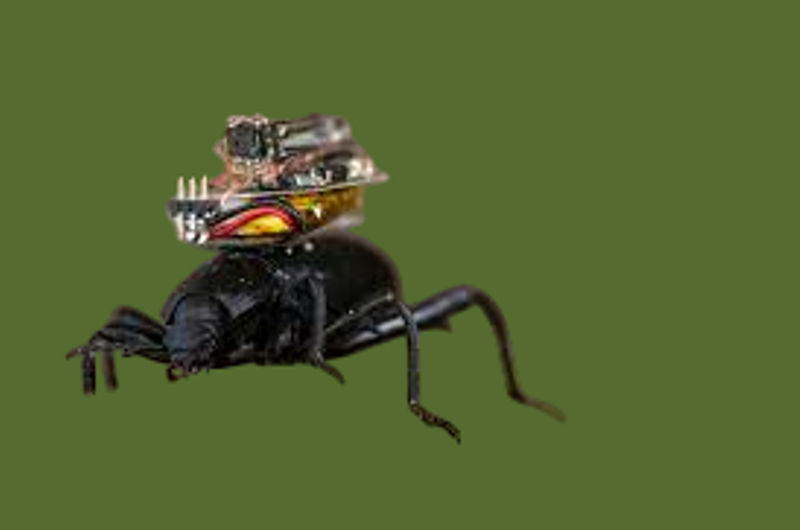The Bug-Watching Camera: A New Lens on the Microscopic World
Imagine being able to witness a butterfly unfurl its proboscis to sip nectar or observe a spider spin its web thread by thread—all in breathtaking detail. The bug-watching camera is revolutionizing how we observe and appreciate the world of insects and other small creatures. These specialized cameras open a window into a realm typically too small and fast for the naked eye to appreciate fully.
Whether you’re a curious nature lover, a budding entomologist, or a photographer looking for unique subjects, a bug-watching camera offers unprecedented opportunities to document insect behavior, anatomy, and ecology. This article explores the technology behind these cameras, their applications, and how they’re changing our understanding of the micro-world around us.
1. What Makes a Great Bug-Watching Camera?
Essential Features for Insect Observation
Not all cameras are created equal when it comes to capturing crisp, detailed images of tiny, fast-moving subjects. The ideal bug-watching camera should have:
– Macro capability (at least a real 1:1 magnification)
– High resolution (20MP or more for detailed cropping)
– Fast autofocus to track moving insects
– Image stabilization for hand-held shooting
– Weather resistance for outdoor use
– Portable size for field work
Specialized Equipment Options
Beyond standard cameras with macro lenses, several specialized options exist:
1. Microscopic cameras that attach to smartphones
2. USB digital microscopes (100x-1000x magnification)
3. High-speed cameras for capturing wing beats
4. Infrared/night vision cameras for nocturnal insects
5. Underwater macro setups for aquatic insects
2. Breakthrough Technologies in Insect Photography
Recent advancements are making bug-watching more accessible and impressive than ever:
Focus Stacking for Perfect Depth of Field
Software that combines multiple images at different focus points creates photos with incredible depth and detail—perfect for showing an insect’s complete anatomy.
4K Video Macro Recording
Modern cameras can now capture ultra HD footage of insects going about their daily activities, revealing behaviors never properly documented before.
AI-Assisted Tracking
Some newer systems can automatically follow and keep focus on moving subjects, ideal for filming bees in flight or hunting mantises.
3. Scientific Applications of Bug Cameras
These cameras aren’t just for hobbyists—they’re powerful scientific tools:
Behavioral Studies
Researchers have used bug cameras to:
– Document never-before-seen mating rituals
– Study predator-prey interactions
– Analyze feeding mechanisms
Conservation Monitoring
Time-lapse bug cameras help track:
– Pollinator populations
– Endangered species
– Invasive species spread
Educational Value
Detailed bug footage is transforming biology education by:
– Allowing students to observe live specimens without handling
– Providing clear views of anatomical structures
– Demonstrating ecological relationships
4. Citizen Science and Community Contributions
Bug-watching cameras are empowering amateur naturalists to contribute meaningful data:
Popular Projects
– iNaturalist’s insect observation database
– Zooniverse’s insect classification projects
– Local pollinator monitoring initiatives
Notable Discoveries
Enthusiasts with quality cameras have:
– Documented rare species
– Captured previously unobserved behaviors
– Provided evidence of range expansions
5. Tips for Getting Started with Bug Photography
Equipment Recommendations
– Entry-level: Smartphone with clip-on macro lens ($50-$150)
– Intermediate: Mirrorless camera with dedicated macro lens ($800-$2000)
– Advanced: Specialized microscope camera systems ($3000+)
Field Techniques
– It’s ideal in the morning because insects aren’t as active.
– Diffuse the lights to prevent harsh shadows.
– Shoot from the insect’s eye level
– Be patient and move slowly
Ethical Considerations
– Never harm or stress subjects
– Avoid disrupting natural behaviors
– Be mindful of sensitive habitats
6. The Future of Bug-Watching Technology
Emerging innovations promise even more exciting capabilities:
Augmented Reality Identification
Real-time AR overlays that identify species and display facts about what you’re viewing.
Automated Monitoring Stations
Smart camera traps that can:
– Recognize individual insects
– Log behavior patterns
– Alert to rare sightings
Nanoscale Imaging
New technologies may soon allow us to observe:
– Microscopic structures like compound eyes in action
– Internal biological processes
– Molecular-level interactions
Conclusion: Changing Perspectives Through a Different Lens
The humble bug-watching camera does more than just take pretty pictures—it fundamentally changes our relationship with the natural world. By revealing details and behaviors we could never properly appreciate before, these cameras foster greater understanding and appreciation for Earth’s smallest inhabitants.
Citizen science and amateur entomology are experiencing a resurgence as the technology becomes more widely available.What was once the domain of specialists with expensive equipment is now available to anyone with curiosity and a capable camera. In an era of insect declines and ecological challenges, these tools help document biodiversity while inspiring the next generation of nature enthusiasts.
The bug-watching camera reminds us that extraordinary wonders exist right under our noses—we just need the right lens to see them. Whether for science, art, or simple fascination, this technology offers everyone a passport to an incredible microscopic safari happening all around us, every day.


